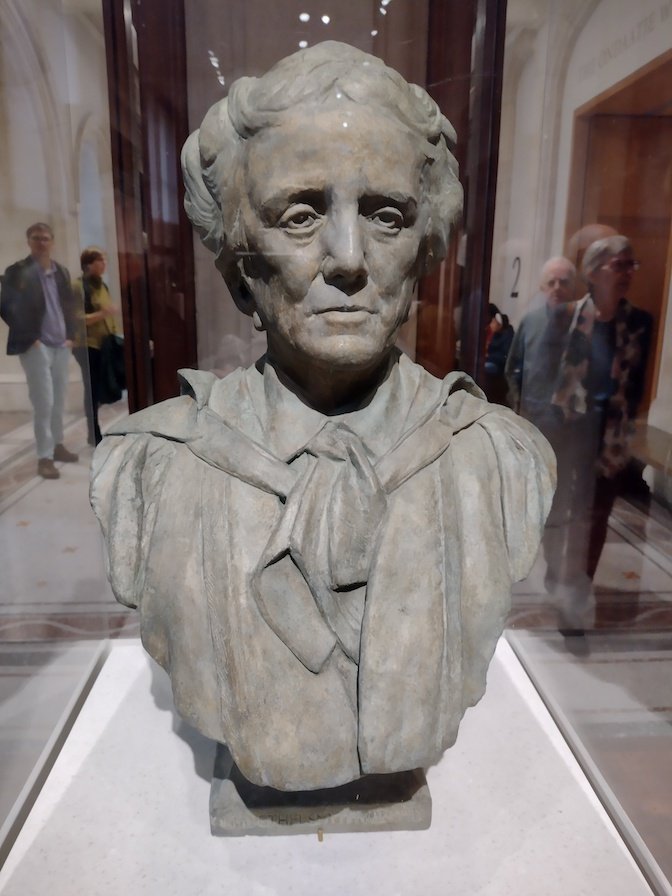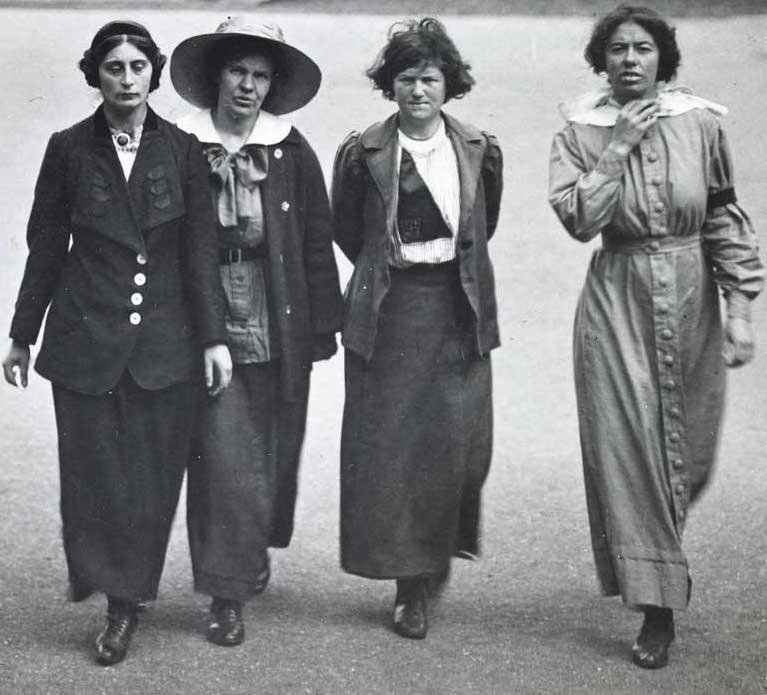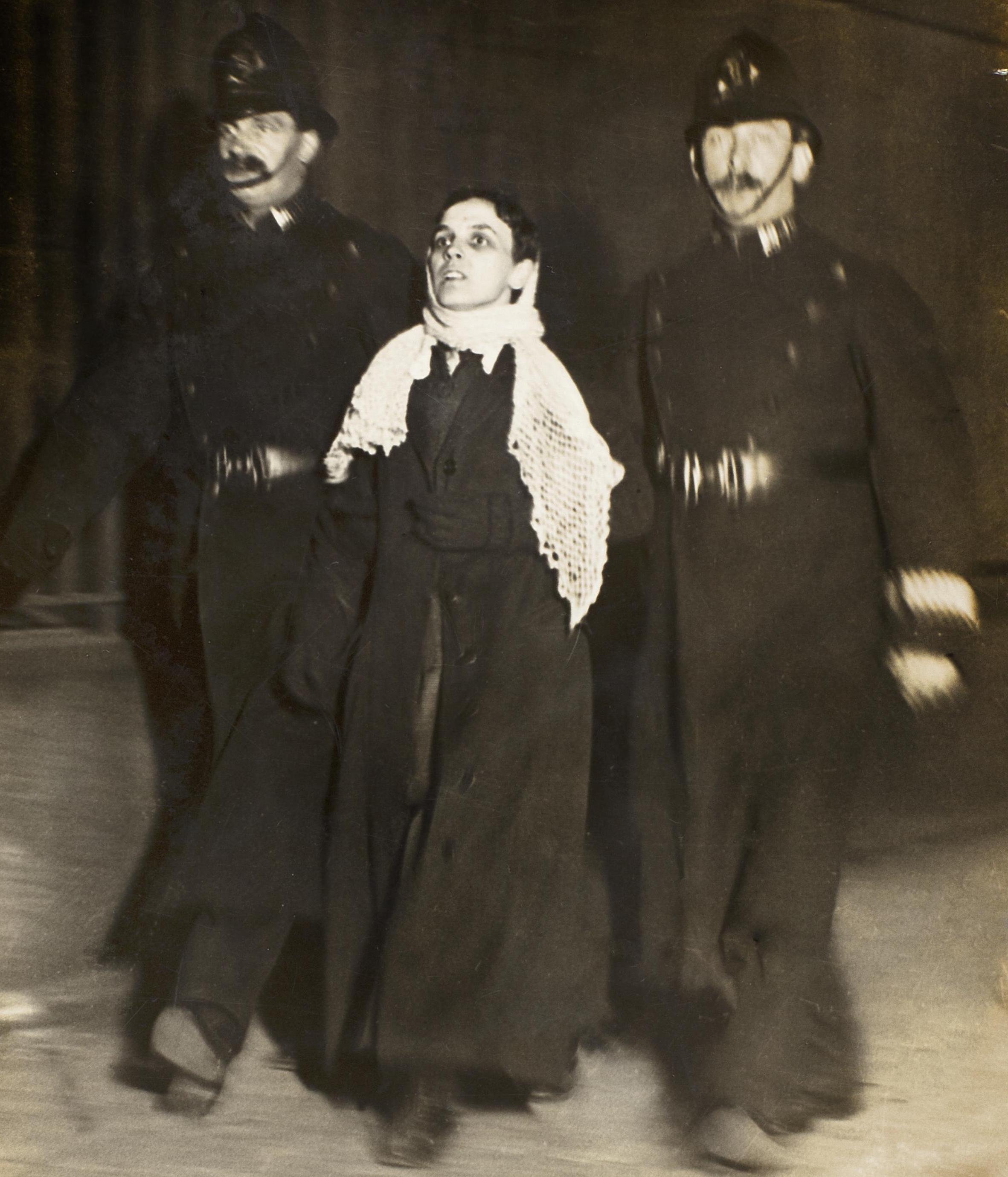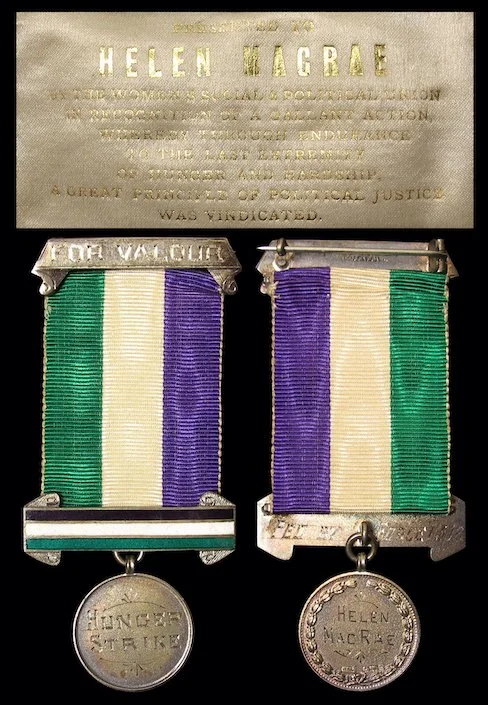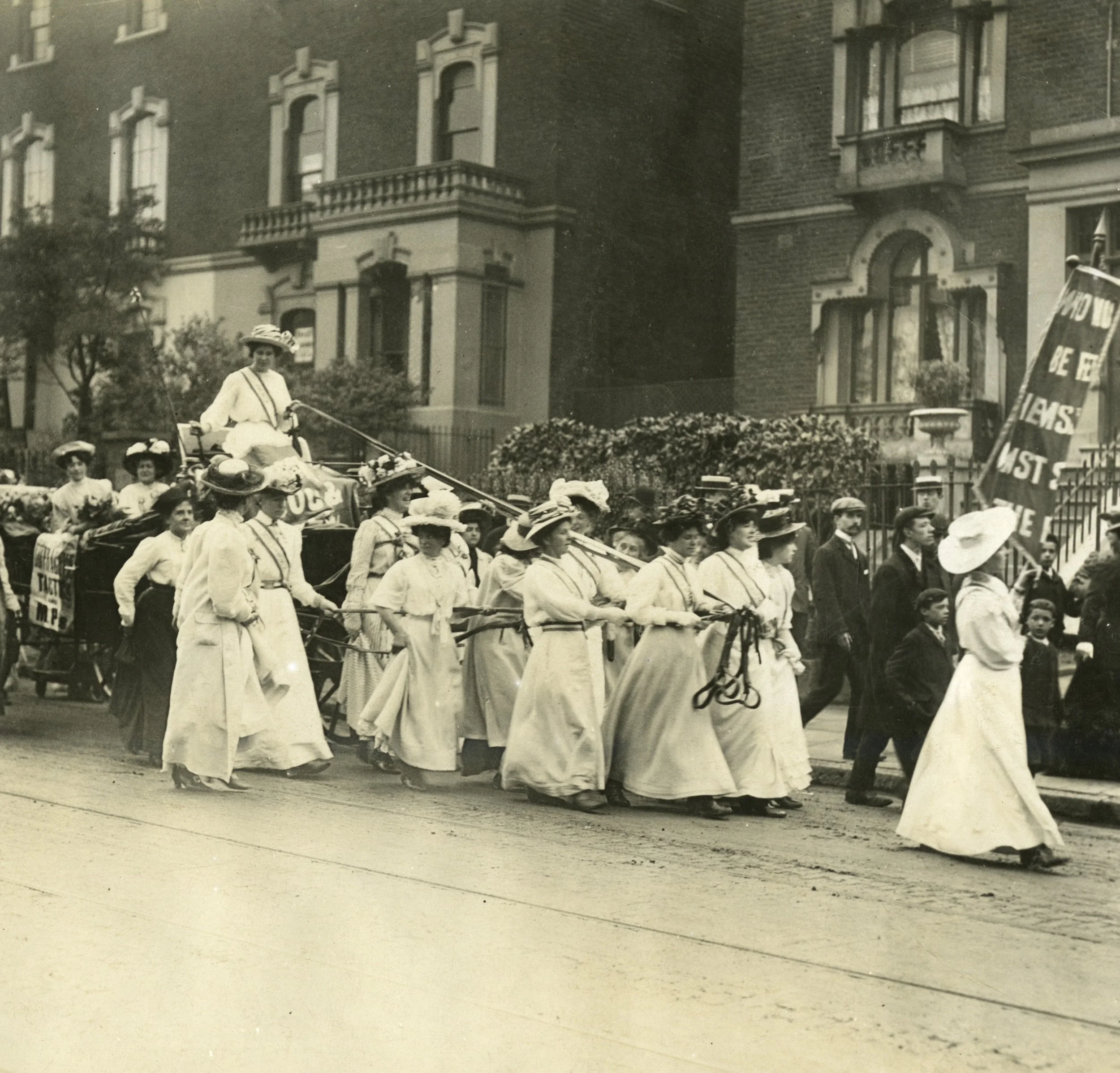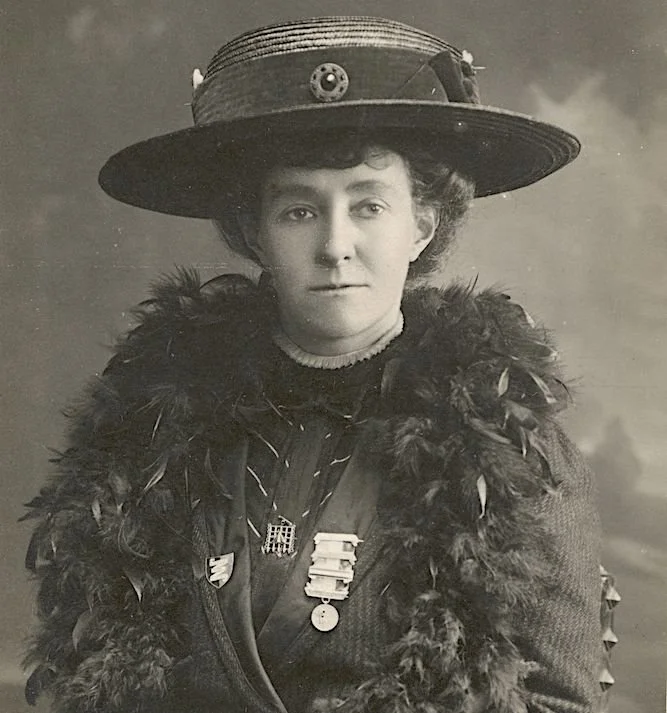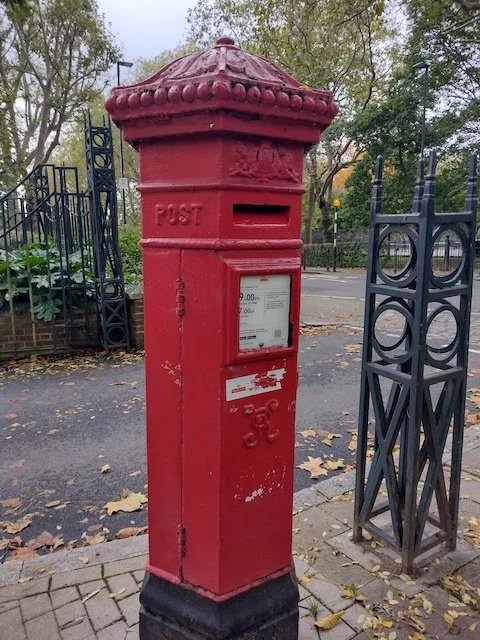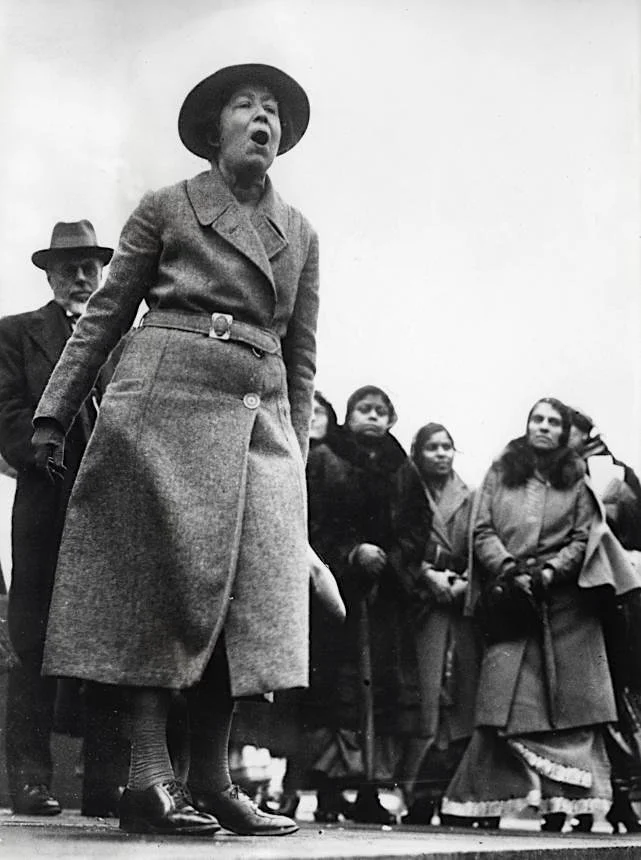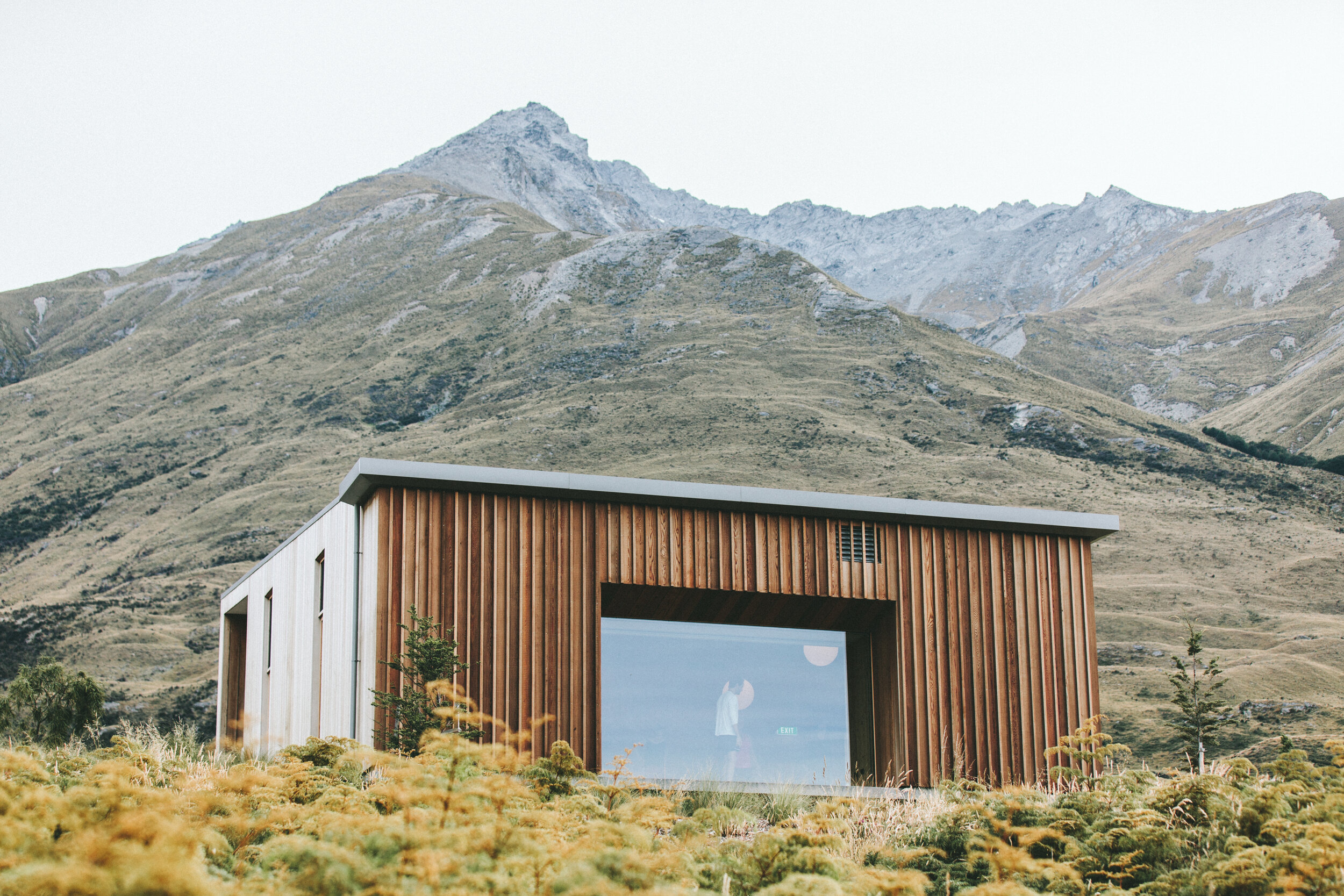London’s Suffragette Set
In the early 20th century, working people fought for the right to vote in all political elections. But while male suffrage advanced, women remained voteless and seething on the sidelines - until a characterful, controversial bunch of ‘Suffragettes’ set London alight - sometimes literally - with their revolutionary style of direct action
Sylvia Pankhurst mural, Bow: Matt Brown, Flickr Commons

-
![]()
The leader
‘Deeds not words’. This was the motto chosen by Emmeline Pankhurst for the Women’s Social and Political Union, which she founded in 1903. Aged 45, Mrs Pankhurst had been active in women’s suffrage groups for three decades, But disappointment at politicians’ disinterest and - in her eyes - deception hardened her resolve. The fight, she decided, must be taken aggressively to the heart of government. In 1906, she moved offices from Manchester to London. She brought with her three daughters, Christabel, Sylvia and Adela, who each played different roles in the struggle for votes for women.
-
The HQ
Mrs Pankhurst moved into the home of Emmeline Pethick-Lawrence at 4 Clement’s Inn. Emmiline had long worked for women’s organisations and became treasurer of the WSPU. Her husband Frederick was also involved in women’s suffrage. Theirs was a respectful marriage - Fred gave his wife the key to a second flat in the building which was entirely hers. It doubled as the organisation’s office, eventually spreading through building. It no longer stands but is the site of the London School of Economic’s Pethick-Lawrence House.
-
![]()
The icon
Mrs Pankhurst’s oldest daughter Christabel was her closest ally. Named after a Coleridge poem, Christabel was a recent graduate with a first-class law degree. Her charisma and dramatic, persuasive speaking style inspired a near-religious adoration within the WSPU, “Do not beg, do not grovel,” she told women. Instead she strategised .a series of confrontations and aggressions that inspired the Daily Mail to first coin the term suffragettes - which only referred to WSPU members, She concentrated her efforts on middle- and upper-class women, believing they would attract the best publicity and have the strength to tackle society’s misogyny once they were granted the vote.
Photo: LSE Library
-
![]()
The branding experts
White for purity, green for hope and purple for regal dignity were the suffragette’s colours. They were chosen by Emmeline Pethick-Lawrence, key member of the WSPU. Suffragettes made a point of dressing in fashionable, feminine style in order to counteract their opponents’ derisive remarks that they were ugly, masculine types. As the colour scheme caught on, Selfridges and Liberty sold ribbon and accessories in suffragette colours. It was modish to buy a ‘secret’ piece such as embroidered stockings that you could conceal or reveal. And jewellers Mappin & Webb created suffragette pieces which fetch high prices at auction today.
Rosette: property of LSE Library
https://en.wikipedia.org/wiki/Artists%27_Suffrage_League
-
![]()
The supporters
The WSPU organised spectacular events and parades that were reported nationally, raising awareness among women from all walks of life. On 21 June 1908, around 500,000 women poured into London on chartered steam trains for Women’s Sunday at Hyde Park. It wa the UK’s largest protest. Mrs Pankhurst topped the bill of a hundred speakers. According to the Lakes Herald, among the crowd were teachers, mill and factory workers, shop assistants, clerks, journalists, novelists, musicians, a playwright, a bachelor-of-law, a tailoress and a nurse.” and the event ended with a cheer like “the roar of a football crowd’.
Photo: Christina Broom, LSE Library
The stump at Speaker’s Corner with photo
-
![]()
The juice-jitsui expert
Edith Garrud was a martial arts expert who trained a special unit called the Bodyguard to protect Mrs Pankhurst from arrest and attack. She taught suffragettes how to take care of themselves too, using the same techniques she employed at the jui-jitsui school on Seven Sisters Road, North London, she ran with her husband. She also did music hall performances in which she showed off her technique, sometimes dresses as a suffragette. A member of the Women’s Freedom League rather than the WSPU, a metal sculpture depicting her stands outside Finsbury Park station..
-
![]()
The newspaper
The newspaper of the WSPU was originally called Votes for Women and edited by Emmeline worked closely with Mrs Pankhurst and was reassured of the WSPU. It was sold by volunteers on the street who were often abused and warned by police not to obstruct the pavement. It reached a circulation of 30,000. It was the Daily Mail who first used the term suffragettes to describe its militant members, and they began to adopt it. When the Pethick-Lawrences were expelled from the WSPU, when they objected to Christabel Pankhurst’s arson campaign, and the newspaper was renamed The Suffragette run by Christabel initially then Annie Kenney. Circulation dipped as the government suppressed the newspaper, After the outbreak of WW1 t the newspaper was renamed Britannia.
-
![]()
The photographer
Christina Broom was the UK’s first female press photogher - self-taught, she began by selling postcards from a stall in the Royal Mews, where she befriended xxxx. But the suffragettes became her main subjects. From 1908, aged 46, she photographed their meetings, marches and private moments. Her photographs of the suffragette’s alternative coronation rally, which attracted crowds of 66,000 are part of a big collection held by the Museum of London. Her army work is at the Imperial War Museum.
-
![]()
The anthem
Description goes here -
![]()
Ethel Smyth
Composer of the March of the Women whose bust is in the National Portrait Gallery and who was rumoured to have had a romantic relationship with Emmeline Pankhurst.
-
![]()
The coin saboteur
Defaced penny in the British museum Osama Shukir Muhammed Amin FRCP(Glasg),Creative Commons 4.0
-
![]()
The mill worker
With Christabel Pankhurst, she interrupting a Liberal meeting (men only, of course) in 1905 and unfurling a banner that read Votes for Women from a balcony, she kickstarted the suffragette phonemoenon. The term was first used (negatively) by Daily Mail writer Charles Hands.
At the end of January 1906, Annie Kenney, a WSPU member, moved to London and in with I think Sylvia Pankhurst at 45 Park Walk Chelsea, where other Pankhurst’s rocked up, that became the address for WSPU correspondence.
‘If men use explosives and bombs for their own purpose they call it war, and the throwing of a bomb that destroys other people is then described as a glorious and heroic deed.
'Why should a woman not make use of the same weapons as men?
It is not only war we have declared. We are fighting for a revolution!’
-
![]()
The Holloway prisoners
Photo from the Museum of London archive is one taken by surveillance during exercise time in the yard of Holloway Prison. https://en.wikipedia.org/wiki/Katherine_%22Kitty%22_Marshall
-
![]()
The Split
Black Friday LSE Library
-
![]()
The caravanner
“We were in a howling mob and it was great fun,” said Ray Costelloe (who would later become Ray Strachey and write an account of the suffrage movement). A Cambridge student, she was taking part in the WSPU’s Women’s Day in Hyde Park on June 21. But she preferred a peaceful approach to campaigning and aligned herself with Millicent Fawcett and the xxx. And the next month became one of four women to take a holiday in a horse-drawn caravan, spreading the word on women’s suffrage, giving speeches in a battered straw hat she used to collect donations. The vote is ‘the only important thing in an otherwise trivial universe’ she wrote after the trip.
Photo: LSE Library
-
![]()
The hunger striker
[[File:Helen MacRae Hunger Strike Medal.jpg|Helen_MacRae_Hunger_Strike_Medal]]. Must have credit: Chris Elmy, Lockdale Auctioneers
Creative Commons Attribution 4.0
https://www.bbc.co.uk/news/uk-england-31988534 The medal sold for £12,300.
-
![]()
The prison diarist
Artist, arsonist and suffragette is the description Wikipedia gives to Olive Wharry (1886-1947), whose prison diary is displayed in the Treasures section of the British Library. Her first arrest at 20 in 1906 was for smashing windows. She Women's Social and Political Union and was also a member of the Church League for Women's Suffrage. In November 1912 she was arrested in possession of ‘explosive’ toy guns before a meeting where Lloyd George was due to speak. She got five days in prison - and smashed her cell windows. At 27 she set fire to the tea pavilion at Kew Gardens, stating at her trial that she was fighting a war. She completed multiple hunger strikes. At Holloway she was ruled insane, but her diaries are sane, satirical and strong.
-
![]()
The revellers
When Emmeline Pethick-Lawrence emerged from prison she was greeted by crowds of supporters and driven to the customary celebratory breakfast at the Criterion restaurant where she gave an inspirational speech, calling Holloway Prison the women’s ‘university’.
Edith New and Mary Leigh's carriage being pulled from Holloway to Queen's Hall, 1908.
7JCC/O/02/045
Photograph, printed, paper, monochrome, three lines of women in pulling the carriage bearing Edith New and Mary Leigh, stuck on to paper; manuscript inscriptions round image 'The released prisoners' carriage being drawn from Holloway to Queen's Hall, Aug 22 '08' and 'London News Agency Photos, 46 Fleet Street'
-
![]()
The art saboteur
On 4 March 1914 ‘I have tried to destroy the picture of the most beautiful woman in mythological history as a protest against the Government for destroying Mrs. Pankhurst who is the most beautiful character in modern history’.
THIS IS ALL A QUOTE> REWRITEBut it was the famous attack by Mary Richardson on Velázquez’s Rokeby Venus at the National Gallery in March 1914 – in which she slashed the painting repeatedly with a meat cleaver – that perhaps galvanised other suffragettes to follow suit. There followed a spate of attacks on works of art at the National Gallery, National Portrait Gallery, British Museum and Royal Academy.
-
![]()
The radical
It all begins with an idea. Maybe you want to launch a business. Maybe you want to turn a hobby into something more.
-
![]()
The arsonists
Description goes here -
![]()
The East Ender
Sylvia Pankhurst was an artist who styled the suffragette look, designing posters, scarves and rosettes. often featuring the angel of freedom, huge banners and wall hangings. She also designed the Holloway brooch with the portcullis of Parliament arrowed by suffragette colours. She founded the East London Federation of Suffragettes in 1913/14? altering ring expelled from the W
-
![]()
The tactician
Description goes here -
![]()
St Stephen's stained glass window
It all begins with an idea. Maybe you want to launch a business. Maybe you want to turn a hobby into something more.
-
![]()
Royal Court Theatre, Chelsea: Votes for Women
It all begins with an idea. Maybe you want to launch a business. Maybe you want to turn a hobby into something more.
-
Caxton Hall and Scroll statue in Christchurch Gardens
Description goes here -
Statue of Emmeline Pankhurst (next to the Victoria Tower)
Description goes here -
Ladies’ Gallery Grille, Central Lobby, 1905/1917 Houses of Parliament, SW1
Description goes here -
2 Campden Hill Squares https://en.wikipedia.org/wiki/Georgina_Brackenbury and lots of Kensington https://inspiringcity.com/2020/12/27/a-walk-through-the-suffragette-history-of-kensington/
Description goes here -
https://en.wikipedia.org/wiki/Leonora_Cohen
https://www.youtube.com/watch?v=KTmL8WjSscY
-
The artists
Suffrage Atelier
-
Notting Hill blue plaque
“Emmeline had adopted sensational new propaganda methods including processions to the House of Commons, speeches and rallies.” English Heritage.
-
![]()
The law-abiding suffragist
Photo: LSE Library
Millicent Fawcett speaking in Hyde Park on 26 July 1913 at the end of the Women’s Suffrage Pilgrimage. Not that she does not call herself a suffragette.








